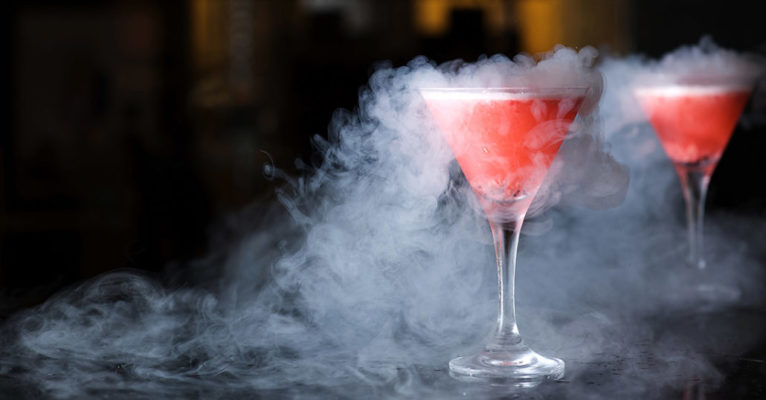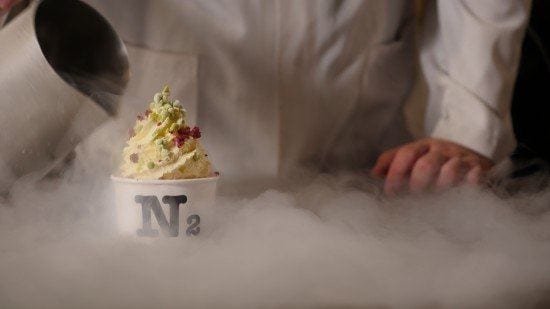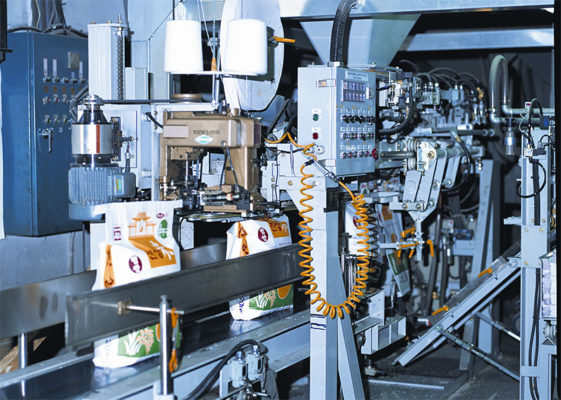Let’s Talk About Nitrogen
You buy a bunch of fresh fruits and veggies from the store with the intent to eat lots of fruits and salads. Well, that doesn’t exactly go as planned, and a few days later your counter is filled with a bunch of brown produce. Yuck! It’s actually not your fault—blame air, specifically oxygen, air consists of roughly 21% oxygen. Oxygen acts as an oxidizing agent which causes the food to spoil. If you don’t store your food properly, it will be overrun with bacteria growth. So what’s all this got to do with nitrogen?
Keeping Your Food Fresh
Nitrogen is an inert, odorless gas which makes up about 78% of the air we breathe. It has a wide variety of uses in the food industry. As annoying as it may be to buy a big bag of chips only to find it half empty, nitrogen fills that space so the food will stay fresh for longer periods of time. In fact, if food is packaged in an air-tight container, there’s a good chance the gas inside is nitrogen rather than normal air. The following foods are typically packaged with nitrogen gas: chips, prepackaged lunch meat, salad mixes, bacon, wine bottles, and more.
Modified atmosphere packaging requires the use of a vacuum. This works by placing the food into a container and then removing the oxygen with a vacuum. The package is then filled with nitrogen and immediately sealed. The nitrogen preserves the color, flavor, and texture of the product for you to enjoy once you open it up!
Freezing Made Easy
You may have seen a science experiment in school where gas pours out of a test tube and the cascades onto the table. The fog you’re seeing is the liquid nitrogen vaporizing into gaseous nitrogen. Liquid nitrogen has a temperature of -320 °F. This means that it can instantly freeze anything that you combine it with. Food grade liquid nitrogen is used to freeze food items rapidly to maximize freshness when storing or transporting them to your local grocery store.
Ever heard of nitrogen ice cream? When you need your ice cream frozen quickly, you can actually use liquid nitrogen. In the traditional process to make ice cream, ice crystals form and expand to freeze, which can sometimes cause a grainy texture. With nitrogen, the result of quick freezing means less oxygen in the mixture, which leads to a smoother and creamier treat! Your product can stand alone as the product of choice for discerning customers.
New Trend Amongst Chefs

The most recent experimental trend in liquid nitrogen is molecular gastronomy. This is a method of transforming food into different shapes, textures, and tastes by mixing science with food ingredients for a new and delicious creation. If you were to freeze raspberries in the freezer and then try to crush them, it would just turn into a raspberry pulp, because only the outer layer is frozen. With liquid nitrogen, the entire food is frozen, so you could pull apart raspberry droplets to use as meal décor and decorations. You could even freeze honey and grind it into a powder or cut bananas into super thin slices or fun shapes. The possibilities are basically endless. Entirely new products are a possibility.
Nitrogen is a reliable and efficient gas used throughout the food industry, and MO2 can provide you with a supply and expertise. Whether you are preserving food long-term, distributing food, or making tasty ice cream treats, MO2 has you covered. With over 70 years of experience, we have the knowledge and experience to help you keep the food coming. Our customers in the food industry have been keeping food fresh for decades.


